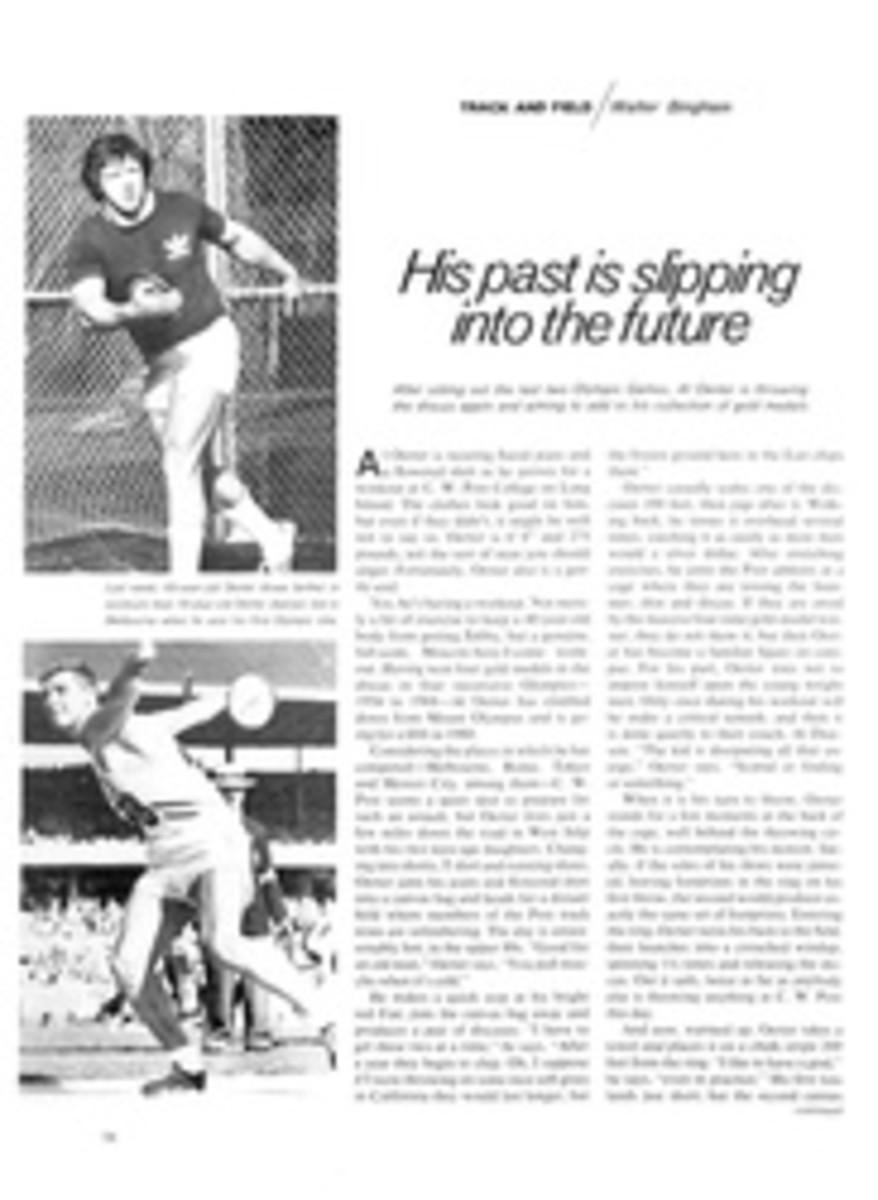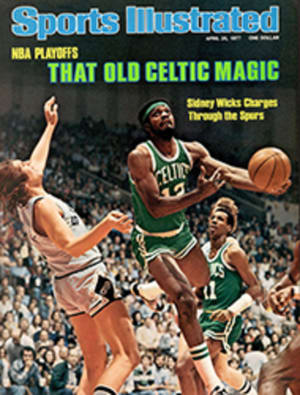
JOY IS HAVING NO RED BRUISES
Today's lacrosse players and coaches, all of whom double as evangelists for their sport, sometimes romanticize about the old-fashioned, boundaryless game the Indians played. It must have been savage, majestic, free. But lacrosse devotees don't get too wistful about the good old days. They claim the modem game, more confined though it is, combines the best elements of football, hockey, soccer and basketball. The hitting is hard and clean, the passing crisp and accurate, the running exhilarating and exhausting. All in all, they say, lacrosse today is one heck of a sport.
Just ask Buddy Beardmore, who has coached Maryland to two NCAA championships in the past four years. "Lacrosse is fun," he says. "You know you'll never become a professional, but still you work like the devil to play your best in high school and college. And when you get out of college, you play club lacrosse just for the fun of it." The fun of it? This includes being knocked down a lot, getting jabbed in the gut with a sharp stick and repeatedly running 100-yard wind sprints. What's this guy talking about?
But there is one sure indication that Beardmore is right. Every lacrosse player, it seems, likes to go to practice. Tom Myrick, a senior midfielder at Johns Hopkins, says, "I love to work out. There's nothing I would rather do than just go out with a stick and shoot around the goal." Some lacrosse players play football in the fall, and they laugh when asked to compare the two. Football practice is drill, drill, drill, but most of a lacrosse workout is devoted to free-flowing scrimmages. Randy Ratliff, a sophomore defenseman at Maryland and a former all-state football quarterback, says, "When I played football, I would feel like a log lying in bed the next morning, but in lacrosse, you can play games twice a week and it doesn't wreck your body."
Lacrosse players' methods for gauging the effectiveness of their play are as odd as their affection for practice. Jake Reed, a 5'7", 150-pound goalie at Maryland and living testimony to one of the game's favorite boasts (that you don't have to be a behemoth to play it), knows he has performed well if he has lost his voice. "I call the defensive plays," says Reed. "I do a lot of hollering, and the more I talk the better we do. My throat is usually hoarse for a couple of days after a good game." Cornell Goalie Dan Mackesey checks the mirror to judge his performance. Compared to the heavily padded hockey goaltender, a lacrosse goalie is out there in his birthday suit, and the solid rubber ball fired at up to 100 mph can leave colorful calling cards. "If I've had a lousy game," Mackesey says, "there are a whole lot of little red bruises all over my body."
On the other hand, Tommy Marino, No. 1-ranked Cornell's carefree attack-man, is disappointed if he's not hurting after a game. "The defenseman is supposed to give me a good pop whenever I come across the crease," Marino says, "to make me think twice about doing it again. So I know I haven't played a good game if I didn't get my head handed to me a couple of times when I was trying to score." Marino's All-America teammate, Eamon McEneaney, measures his success in assists. "I'd rather make a good feed than score any day," he says. And McEneaney has the stats to back him up; last season he scored 20 goals and 61 assists.
Mike O'Neill of Hopkins feels that taking part in a good lacrosse game is like playing basketball with the Celtics. "I enjoy the unsettled aspect of the game," he says. "We have set plays, but mostly it's run and gun, plays that you could never diagram." One of those diagramless situations is the ground ball. Like a loose ball in basketball, it is fair game for either team. But in lacrosse you can play the man instead of the ball. In other words, anything goes.
The face-off is another such situation. The ball is placed between two opposing players, and they lock horns and sticks until one gets possession. Bob Ott of Maryland thrives on face-offs. "The secret to the face-off," he says, "is quickness, strength, anticipation...and a little bit of cheating."
But lacrosse is not merely a treat for the players; its tableaux make it a joy for spectators. While a goalie rests on the broad head of his stick, gazing pensively at the action downfield, one of his teammates, a scampering attackman, cradles the ball in a tiny 40-inch stick that he manipulates as if it were an extension of his arm. He jukes one defender, eludes another and fakes out a third with a series of contortions that would have done Houdini proud. Or picture this: the defense is a man down, and the offense is playing a cat-and-mouse, hit-the-open-man game. The ball goes lazily back and forth until, suddenly, it flashes in front of the crease to an attackman who catches and shoots in the same motion. Quick-stick! Score!
Last year, the professional National Lacrosse League folded after two seasons because of empty arenas and emptier coffers. Two states, New York and Maryland, continue to supply most of the players at all levels. Lacrosse disciples speak wistfully of TV exposure, but even their championship games rarely draw crowds of 10,000.
No, despite the fact that it has crept into places like Los Angeles and Houston, lacrosse may never go big-time, but don't bother telling the chaps on the preceding four pages. They like lacrosse just the way it is. Unless, of course, you've got about 500 guys who might be interested in a pick-up game out on the Great Plains.

